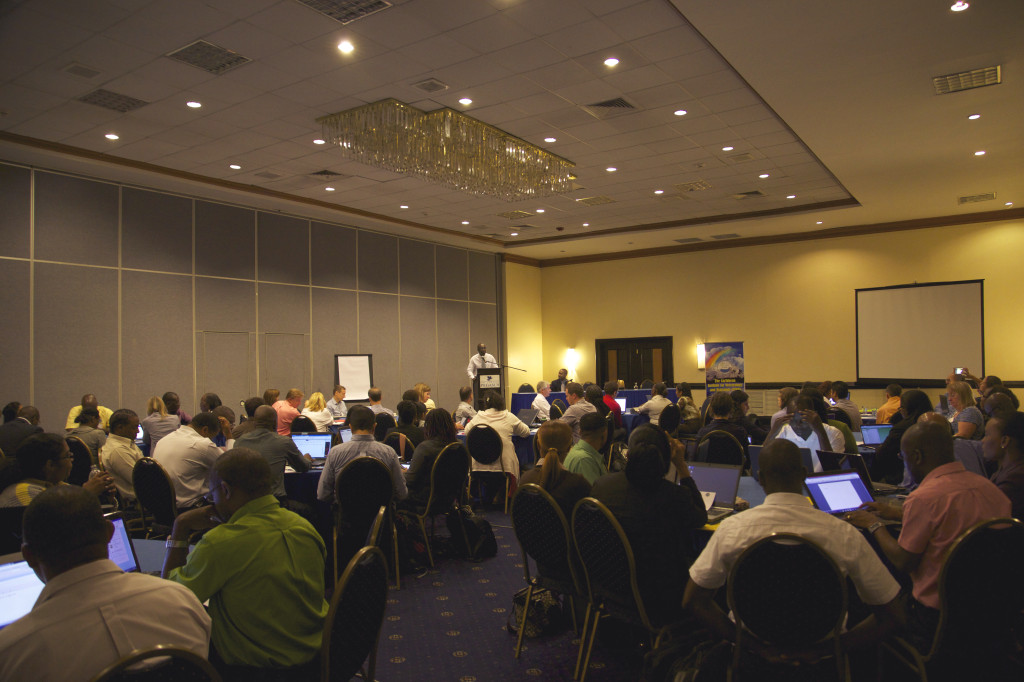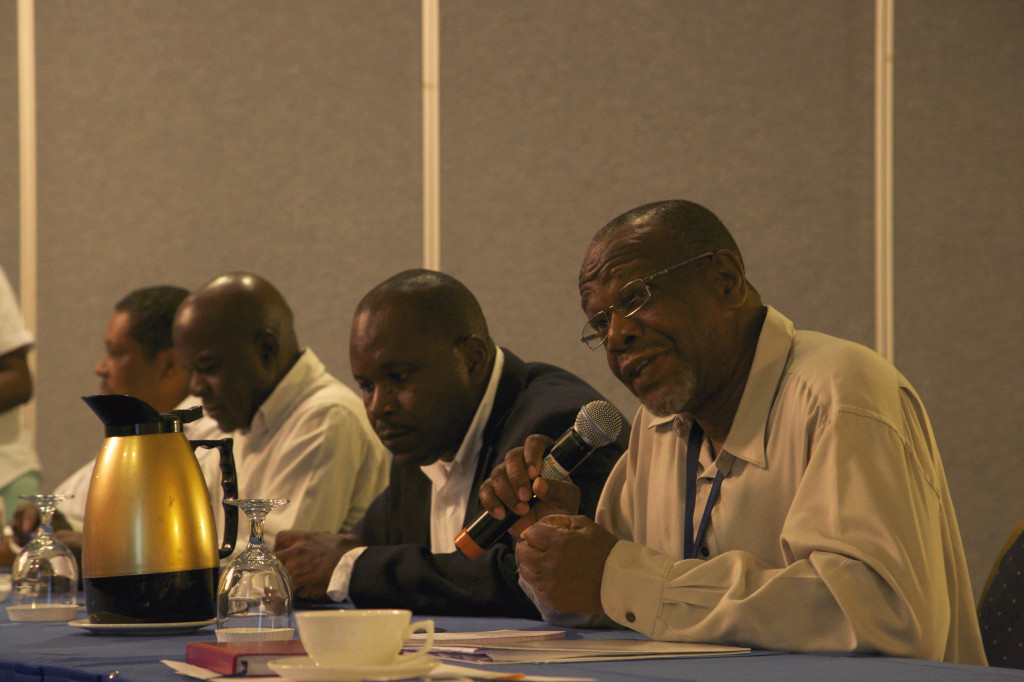Live from Kingston: It’s CariCOF
By Elisabeth Gawthrop and Mea Halperin
The Caribbean Climate Outlook Forum (CariCOF) took place yesterday in Kingston, Jamaica. It is one of a number of Climate Outlook Forums (COFs) around the world during which scientists present a forecast to decision makers who work in climate-sensitive sectors such as agriculture, water management, disaster planning and health. The forecast is made by consensus of scientists from across the region.
The first CariCOF was held in 1998, but after a few years the Caribbean Institute of Meteorology and Hydrology (CIMH) became the sole creator and disseminator of the region-wide forecasts. CariCOF was reinstated when an extreme drought in 2010 called attention to the need for regional collaboration among national-level scientists and decision makers.

Adrian Trotman of the Caribbean Institute for Meteorology and Hydrology addresses CariCOF participants.
Typically, the primary component of the CariCOF has been to present the seasonal rainfall forecast produced with the Climate Predictability Tool. This year, for the first time, forecasters attending the CariCOF generated a temperature forecast and a drought outlook. The drought outlook received most of the attention and engagement from decision makers.
“The drought outlook was a big success today in that it turned probabilistic forecasts into a more digestible format, but much research still needs to be done on how to define the phases of drought in a way that is accurate scientifically and with regard to impacts,” says Simon Mason, Chief Climate Scientist at the International Research Institute for Climate and Society, who has been involved with COFs around the world since they were first held.
The newly issued forecast indicates that much of the Caribbean has a slightly higher chance for drier-than-average conditions over the next six months, which is the region’s wet season. Forecasters emphasized that below-average precipitation during the wet season does not necessarily mean there will be impactful drought, but it may make drought more likely to occur during the dry season that follows. Drought is a climate impact that builds up slowly over months. Using forecasts can alert decision makers before the drought reaches a hazardous level so that they have the opportunity to take preventative measures and reduce vulnerabilities.
Climatologist Cédric Van Meerbeeck from CIMH says that most people in the Caribbean are used to preparing and reacting to hurricanes. “We want to emphasize that preparedness is also important for other climate risks, such as drought.”

Leslie Simpson of the Caribbean Agricultural Research and Development Institute plays the role of spokesman in a mock press conference during CariCOF.
In addition to producing a consensus forecast, COF participants also took part in a variety of training activities and listened to presentations from their colleagues on the latest climate-related research. For example, a key area of research that may be most applicable to decision-makers is forecasting on the ‘sub-seasonal’ time scale, but it is not advanced enough yet to be operational.
There was also a break-out group exercise in which practitioners in water management, health, agriculture, and disaster risk management discussed improving the way in which climate forecasts are disseminated and communicated to make them more useful. Representatives from these groups later staged a mock press conference to highlight the challenges that leaders have in communicating climate information, as well as types of tough questions the media asks of practitioners and other experts.
The COF isn’t all work and no play, however (literally!). Scientists-turned-actors from CIMH, the Jamaica Meteorological Service and the Caribbean Agricultural Research and Development Institute put on a play demonstrating how small farmers could benefit from the drought forecast products:
“This was one of the better COFs I have attended. It was energizing and engaged people enough that the conversation will likely continue. There is still much work to be done, however, and collaboration with decision-makers must be more integrated and continuous. Communicating the information properly is just the first step,” said Mason.
The CariCOF and subsequent IRAP workshop were co-sponsored by the U.S. Agency for International Development and the National Oceanic and Atmospheric Administration’s Climate Program Office.

You must be logged in to post a comment.